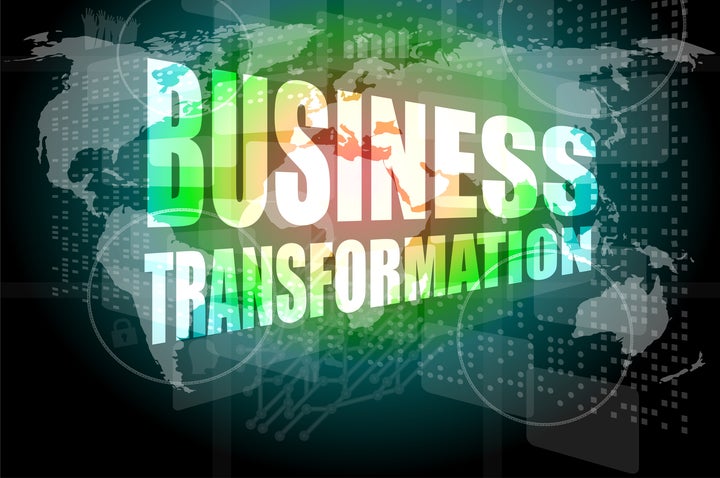
Once upon a time when companies had a problem they imported consultants to solve it. Or they outsourced the problem. Now, the problems and solutions posed by the digital age are so complex it takes a team of insiders and outsiders to find the way. Transforming organizations demands increased responsible leadership from everyone in the company particularly at the executive level where authority and leadership are confused.
Why is so hard to transform organizations?
Cellular biologist Dr. Bruce Lipton, in a podcast interview, explains that companies have two minds: the conscious mind that appears to run the show. It works with what you see on the surface, making it tempting to blame employees for stress-related illness or to fix behavior.
Meanwhile, the other mind, the subconscious mind, determines performance without consciously being aware of beliefs buried in the decisions, focus and metrics. Unless you surface those beliefs and see how they power decision-making or innovation, you’ll keep getting incremental results and limited innovations: tweaks rather than leaps. Those beliefs were formed in the days when the world wasn’t as complex as it is now.
In complex living systems, communities of interactions that characterize workplace environments, change is not effected through engineering outcomes. It is achieved by engaging the creative spirit residing in employees. That is easier said than done. Every company starts from where they are. While seemingly obvious, the traditional mechanisms to achieve transformation assume similar starting points. Reading the dynamics, choosing the right people to guide from the inside and outside is as much an art form as knowing the skills or mindset required.
David Heron, Group CEO of Wilton & Bain, a global leadership advisory boutique, and WBMS Associate Chris Bevan described in an episode of the Insight to Action podcast, the tensions they work with while supporting their clients through transformation. Out of a number of tensions discussed, three come to the top:
1. Tension between operational skills and the need for transformational leaders. Operations deal with certainty. Transformation deals with uncertainty. Operations deal with day-to-day; transformation requires sharing a vision.
2. Tension created by not understanding what digital transformation means. Out of a series of assumptions, short cuts are taken to launch endeavors, which ultimately dilute the brand and cost a lot of money.
3. Tension between what executives are rewarded for doing and what is required from them in order for business sustainability to be successful. This points to the need to reflect on the entire dynamic to adjust the reward system so that business sustainability is possible. Otherwise, leadership initiative is sabotaged.
Using these tensions to convert factors sabotaging business sustainability into a force for creative workplace design will strengthen engagement while increasing responsiveness.
Katrin Muff, Business School Lausanne, and her colleagues have developed GapFrame. GapFrame is a tool for seeing the gap between what it will take for planetary sustainability. Closing that gap requires a leap in the role business plays in society. While the majority of companies are struggling to adapt to both the speed and complexity of the global environment, some are choosing to embark on a different kind of strategic conversation that holds the secret behind employee engagement and a meaningful purpose. Others, according to Heron and Bevan, are not ready to have that level of conversation. Strategy is restricted to maintaining market position and traditional practices.
Focusing strategic conversations on how a company can help achieve planetary sustainability has an impact on the business model. Vulcan Technology, founded by Paul Allen, has a division dedicated to restoring wildlife in Africa. Vulcan works with “innovative approaches that can save endangered species, address climate change, improve ocean health, explore new frontiers, research how the human brain works and build sustainable communities.” Not Impossible Labs, a crowdfunded non-profit company launched by Mick Ebeling, prints 3D-printed prosthetics in war torn native Sudan. See Daniel’s story on YouTube.
The movement toward great workplaces that naturally engage talent by design without external incentives is growing. More and more companies are adopting freedom-centric designs, and self-managed governance models. Corporate rebels, Joost Minnaar and Pim de Morree, roam the planet visiting like-minded rebels like Nearsoft Inc., while instigating change.
To accomplish the massive shift, companies need to adapt to changing external conditions. This means engaging talent, and switching from reliance on process to engaging the power of human’s driven by a shared purpose. It means thinking differently and converting to human-centred workplaces. Acceptance of a higher level of responsibility, personally and corporately goes with the territory.
In a world where bubbles of reality artificially shelter companies from facing the hard truths about the evolution of business and human consciousness you – I - we, have a choice. Perpetuate the past? Or design a future with hope and compassion that benefits all.
Where do you stand?
Dawna works with progressive early adopter decision-makers ready to engage energy to transform. Speaker and workshop leader, she is the author of Decision Making for Dummies . She has contributed a chapter on the new purpose of business to ‘The Intelligence of the Cosmos” by systems theorist Ervin Laszlo. She hosts the Insight to Action podcast for business innovators on iTunes. Contact her through www.FromInsightToAction.com and LinkedIn.
